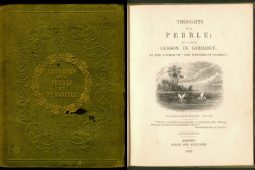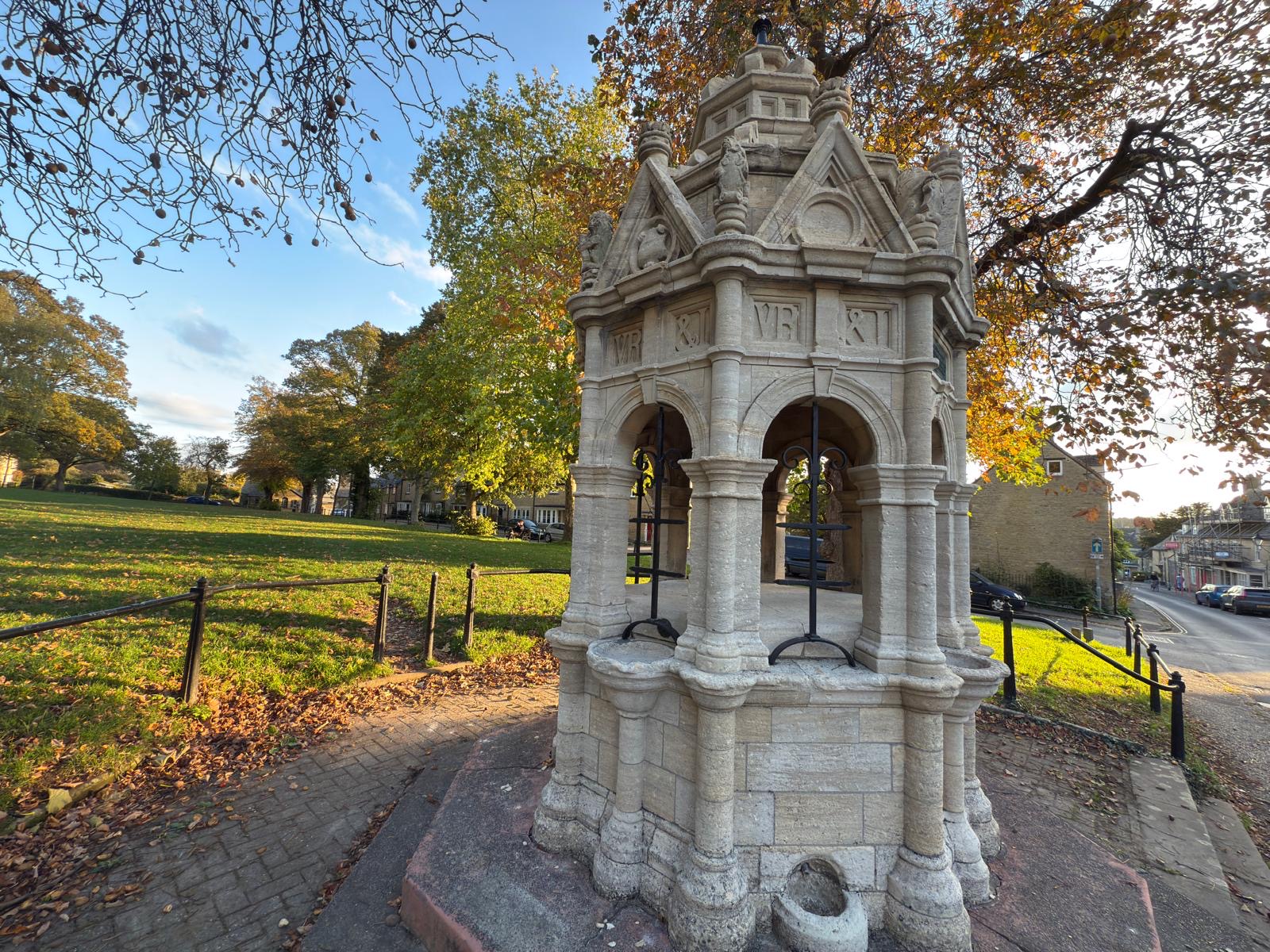
The Jubilee Fountain, The Playing Close, Charlbury, Oxfordshire, UK (Credit: Ruth Allington)
By the 19th century the use of gravestones for people of all classes seems to have become widespread, and the monumental masonry trade flourished. The wealthy would commission monumental masons to create their elaborate gravestones and monuments, but in rural areas it was often the local stonemason people turned to for simpler designs. For example, in Charlbury in northwest Oxfordshire, the churchyard and burial ground include several gravestones carved by the local stonemason, John Kibble [1865 – 1951].
A man of many talents
Kibble was born in Finstock near Charlbury to a family of stonemasons. He was apprenticed to his father and spent his working life as a stonemason in and around the Wychwood Forest villages. In 1901, he set up a business as a stonemason in a house opposite the burial ground in Charlbury.
But monumental masonry was not Kibble’s only enterprise. He ran a punting business and built 19 sheds in his garden (some thatched, some tin-roofed) in which he kept a variety of animals and housed the collection of fossils and artifacts collected in the course of his work. He also researched and wrote three books documenting local history in the Wychwood Forest area.
Jubilee Fountain
As a stonemason, perhaps the pinnacle of his achievement was the carving of the elaborate Jubilee Fountain in the Playing Close in Charlbury. The Jubilee Fountain was built to celebrate three events: a brief visit by Queen Victoria to Charlbury in 1886; the provision of a water supply to the town in 1896; and Queen Victoria’s Diamond Jubilee in 1897. The project was overseen by a Fountain Committee, led by Mr Holloway, Chair of the Council of Charlbury.
When the committee advertised for designs, they were overwhelmed by submissions from all over Britain. The return postages of the rejected designs alone amounted to £2 14s. The cost of entire project, funded by Mr Harvey Du Cross, then owner of the nearby Cornbury Estate, eventually ran to £193 16s 11d. Kibble’s own design for the Fountain was rejected in favour of a design described in the Oxford Times as “a carved octagonal structure with six arches and drinking cups, and drinking places for dogs round the massive base, the whole surmounted by a handsome lamp”, submitted by A. R. Gough, ARIBA of Bristol.
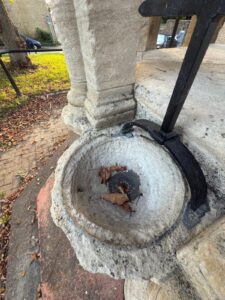
(Credit: Ruth Allington)
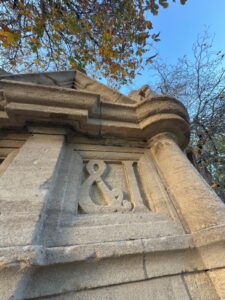
(Credit: Ruth Allington)
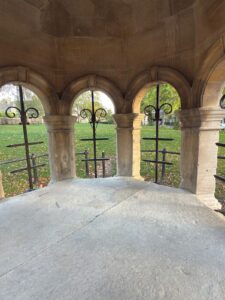
(Credit: Ruth Allington)
Kibble’s own design for the Fountain was rejected
The Building News reported that Gough’s elaborate design included “… a medallion of the Queen, the Royal Arms, those of the donor and the town seal. Above are finials representing the Imperial Crown, which also forms the apex of the lamp. And on the angles between the gablets are fixed heraldic figures representing the lion and unicorn”. Kibble was commissioned to carve it.

The fountain’s plaque credits Kibble with the design, in error. Kibble’s design was rejected, but he was responsible for carving the stone. (Credit: Ruth Allington)
The majority of the monument is carved in Bath Stone, a honey-coloured Middle Jurassic (Bathonian) oolitic limestone from the Great Oolite Group. A freestone, Bath Stone was widely used throughout southern England, for churches, houses, and public buildings, and is praised by sculptors because it is easy to carve. The committee specified “The Bath Stone used in constructing this fountain to be Coombe Down stone from Love’s quarry, to be free from all large flint veins, cricks, soft beds, sand holes, and other defects, and to be laid on its quarry bed”. However, as it turned out, the dog drinking troughs are made of Portland Stone, an oolitic limestone from the Upper Jurassic.
This magnificent example of the stonemason’s craft still graces the Playing Close in Charlbury.
A tribute
Kibble himself was a staunch Methodist and local preacher. One resident who attended his services recalled how exhausted agricultural workers would doze off during his sermons until Kibble’s thunderous exhortation to REPENT shook them awake again. Considering the stone carving skill Kibble demonstrated in the construction of the Jubilee Fountain, the Fountain Committee had no need to REPENT of their choice of stonemason!
Acknowledgements
I thank local residents Susan Tokumine and Tony Cooper and sculptor Emma Maiden for help with research; and Danielle Czerkaszyn, librarian at the Hope Library, Oxford University Museum of Natural History for help locating articles in The Building News.
Author
Nina Morgan is a geologist and science writer based near Oxford
Further reading
- The Building News (1899) 1 December, p. 729
- Charlbury Museum (n.d.) The History of Charlbury through objects, photographs and memories from Charlbury Museum [booklet]. Charlbury Museum and Heritage Centre; www.charlburymuseum.org.uk
- Charlbury Museum Archive Documents (n.d.) Archive materials held at Charlbury Museum, including obituary of Kibble; Memories of Kibble by Florrie Baldwin; specifications and invoices for the Jubilee Fountain.
- Jeffs, J. (2020) The Fountain on the Playing Close. IN The History of Charlbury through objects, photographs and memories from Charlbury Museum [booklet]. Charlbury Museum and Heritage Centre; www.charlburymuseum.org.uk Contact: info@charlburymuseum.org.uk
- The Oxford Times (1898) December
- The Oxford Times (1900) September
- Oxfordshire Blue Plaques Scheme (n.d.) Oxfordshire Blue Plaques Scheme: Kibble plaque; oxonblueplaques.org.uk/plaques/kibble.html
- Serridge, C. (2025) Tradition under threat. Geoscientist 35 (1), 12-13; https://doi.org/10.1144/geosci2025-001
Citation: Morgan, N. Local talent. Geoscientist 35 (4), 36, 2025. DOI: 10.1144/geosci2025-034










